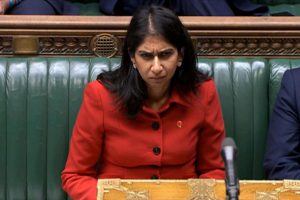CONSIDER the lilies of the field.
They neither weave nor toil, and yet Solomon, in all his glory, was not arrayed as one of these.
That’s the way Plaid Cymru members of a particular stripe regard their Party’s leader, Adam Price.
Among the faded blooms and – let’s face it – the thicket of Welsh politics, Plaid Cymru members see Mr Price as someone different.
To them, he’s an individual with unmatched qualities of oratory and intellect that mark him out from his peers in Welsh politics.
Which must make it terribly annoying for them that, for all his undoubted intelligence and talent, Adam Price’s chances of becoming First Minister rely on May 6’s vote producing an epoch-ending electoral earthquake.
One of life’s little electoral ironies is that for Abolish the Assembly (sic.) to pick up some regional seats in South-East Wales, Plaid will have to do very much better than they have ever done before to win constituencies from Labour.
And, in all honesty, Plaid has no hope of unseating either Mark Drakeford or Alun Davies.
Hefin David, in Caerphilly, faces a tough challenge from Delyth Jewell. However, his defeat would come as a shock.
Elsewhere in the Valleys, Labour targets Leanne Wood’s Rhondda seat.
Further west, despite bullish noises about Carmarthen West and South Pembrokeshire, Plaid’s best constituency hope is Llanelli.
Plaid’s sole North Wales target worth mentioning is Aberconwy, where the Conservative frontbencher Janet Finch-Saunders has a majority of around 750.
Plaid’s Aaron Wynne is running an astute campaign but could (ironically) suffer because of the level of hostility towards Cardiff Bay across North West Wales (or The Undiscovered Country, as it’s called in Labour circles).
For Plaid Cymru, the problem is stark.
Plaid won Islwyn in 1999 when Brian Hancock polled over 10,000 votes. Since then, the Party’s vote has not exceeded half that amount in any subsequent election.
In 1999 in Blaenau Gwent, Plaid won just over 5,000 votes. You could add Plaid’s total number of votes received in three of subsequent elections and not get to 5,000 votes in total.
Apart from Caerphilly, Plaid has not finished higher than a very distant third place in each of the South Wales East constituencies.
Apart from in Neath (South Wales West) and the Rhondda (South Wales Central), that picture has remained consistent.
Since 1999. Plaid has not come close to winning a constituency outside of North West and Mid and West Wales apart from the exceptions noted above.
Those are hard electoral facts.
In 22 years and five elections since 1999, the highest number of seats Plaid Cymru has won is seventeen at the outset. Dafydd Wigley’s reward was getting shafted.
If Plaid wins fifteen seats in this election, it will have done well. Anything more than that will be an exceptional achievement.
To do better, Plaid must build where there are foundations. It should pick the right battles in the right seats where other parties’ votes are soft. It must campaign professionally and consistently (oh dear, Cardiff North!)
If Plaid is realistic, it will acknowledge those factors, box clever, concentrate heavily on the regional vote, and prepare for the next Senedd term now.
Cadno and Plaid’s Problem
















Add Comment